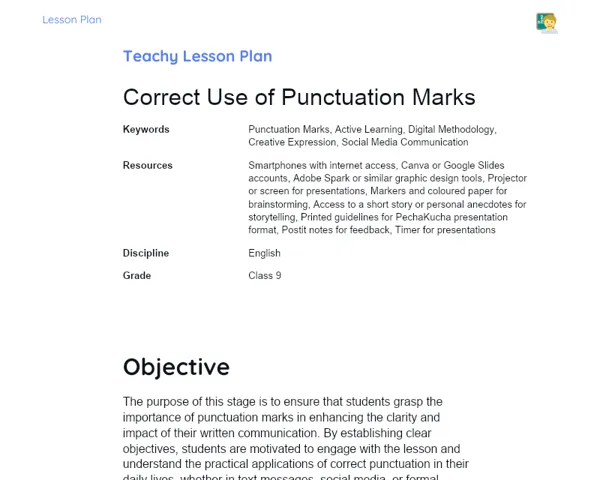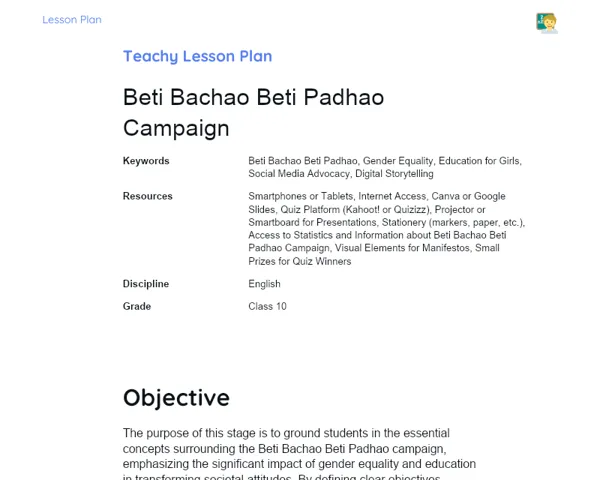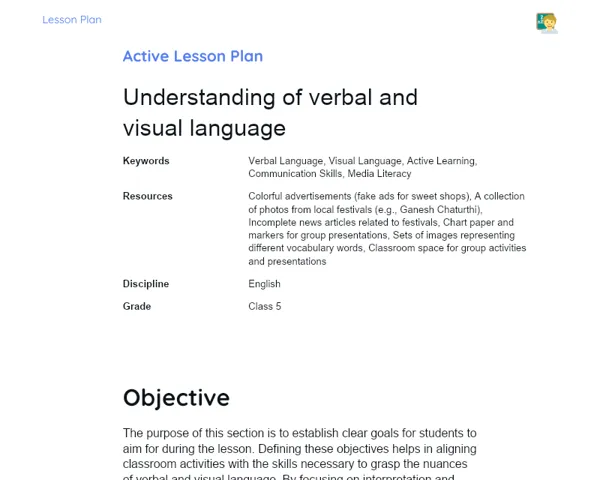Lesson Plan | Lesson Plan Tradisional | Use and Variation of the English Language
| Keywords | Variations of English, British English, American English, Australian English, Vocabulary Differences, Pronunciation Differences, Grammatical Differences, Cultural Influence, Practical Examples |
| Resources | Whiteboard, Markers, Projector, Presentation slides, Paper sheets, Pens, Reading materials regarding variations in the English language, Videos showcasing examples of varied dialects, Word list for classroom discussion |
Objectives
Duration: (10 - 15 minutes)
The aim of this section of the lesson plan is to provide a detailed overview of the main objectives that the lesson seeks to achieve. This helps ensure that students understand what they will be learning and what is expected of them throughout the lesson. Establishing clear objectives keeps the lesson focused and allows for measuring students' progress in grasping the variations of the English language.
Objectives Utama:
1. Understand the various variations of the English language across different regions of the world.
2. Identify the key differences between British, American, Australian English, and other regional dialects.
3. Recognize practical examples of these variations in vocabulary, pronunciation, and grammar.
Introduction
Duration: (10 - 15 minutes)
The purpose of this lesson plan section is to pique students' interest and set the stage for the topics to be discussed. Introducing the subject with a comprehensive context and relatable examples helps connect the content to students' realities, making the learning experience more engaging. Moreover, grasping the importance of linguistic variations from the get-go aids in the retention of the material that will be explored throughout the lesson.
Did you know?
Did you know that some words can mean entirely different things depending on where English is spoken? For example, while in the U.S., 'pants' means trousers, in the U.K., it refers to underwear. Such differences can lead to amusing or perplexing situations, underscoring the importance of understanding regional variations of the language.
Contextualization
To kick off the lesson on the use and variation of the English language, it's vital to familiarize students with the extensive reach and diversity of English around the globe. English serves as the official language in over 50 countries and is spoken as a primary language by millions. However, this extensive geographical spread results in different linguistic variations. These variations reflect not just regional differences but also cultural aspects, encapsulating the history, influences, and daily experiences of the communities that speak them. Therefore, comprehending these variations is crucial for effective communication and fosters appreciation for the cultural richness that each dialect contributes.
Concepts
Duration: (40 - 50 minutes)
This section of the lesson plan aims to deepen students’ understanding of the variations within the English language by presenting concrete examples and thorough explanations. This will enable students to recognize and appreciate linguistic diversity while developing practical skills to identify and adapt to different dialects. Through interactive examples and practical questions, they can apply what they’ve learned in a relevant context.
Relevant Topics
1. Vocabulary Differences: Demonstrate how common words can have different meanings across regions. Examples: 'pants' (U.S.) vs. 'trousers' (U.K.), 'boot' (U.K.) vs. 'trunk' (U.S.).
2. Pronunciation Differences: Illustrate how the pronunciation of words can differ between dialects. Examples: 'water' (British pronunciation) vs. 'water' (American pronunciation), 'tomato' (U.K.) vs. 'tomato' (U.S.).
3. Grammatical Differences: Showcase examples of grammatical variations between dialects. Examples: use of the present perfect (U.K.: 'I have just eaten') vs. simple past (U.S.: 'I just ate').
4. Australian and Canadian English: Highlight some unique features of English spoken in Australia and Canada, with specific examples of vocabulary and pronunciation. Examples: 'thongs' (Australia, referring to sandals) vs. 'flip-flops' (U.S.), Canadian pronunciation of 'about'.
5. Cultural Influence: Discuss how culture and history shape these variations. Examples: French influence in Canadian English, the impact of British colonization on Australian English.
To Reinforce Learning
1. Can you give three examples of words that mean different things in American and British English? Explain what each means in its respective region.
2. What is one pronunciation difference between British and American English? Use specific words as examples.
3. Describe a notable grammatical difference between British and American English, with example sentences to illustrate.
Feedback
Duration: (20 - 25 minutes)
This section of the lesson plan aims to reinforce the knowledge students have acquired by clarifying doubts and delving deeper into their understanding via discussions and reflections. Facilitating an active exchange of ideas allows students to internalize information better and cultivates a greater appreciation for the various forms of the English language.
Diskusi Concepts
1. Elaborate that words can have different meanings based on the region where English is spoken. For example: 'pants' in the U.S. means 'trousers', whereas in the U.K. it refers to 'underwear'. 'Boot' in the U.K. denotes the 'trunk' of a car, while in the U.S., 'trunk' is the correct term. 2. Detail pronunciation differences between British and American variants. For instance, the word 'water' is pronounced more distinctly with a 't' in the U.K., while in the U.S., it’s pronounced more like a 'd'. Also, 'tomato' is said as 'to-MAH-to' in the U.K. and 'to-MAY-to' in the U.S. 3. Discuss significant grammatical differences, such as the usage of the present perfect in the U.K. ('I have just eaten') in contrast to the simple past in the U.S. ('I just ate'). Emphasize how these variations can affect comprehension and communication.
Engaging Students
1. Ask students: What other examples of words can have different meanings in different regions do you know? Encourage them to share their examples. 2. Initiate a conversation about how pronunciation can alter the meaning or understanding of a word. Invite students to share words they struggle to pronounce across different dialects. 3. Encourage students to reflect on other grammatical differences they’ve come across while learning English. Prompt them to provide examples and discuss how such differences might hinder communication. 4. Reflection: How do you think the culture and history of a nation influence language variation? Get students to reflect on cultural impacts on language and share their insights.
Conclusion
Duration: (10 - 15 minutes)
This section of the lesson plan focuses on solidifying the students’ learning experience, reiterating the primary points covered while linking them to the real-world relevance of the content. Summarizing and reflecting on the material that has been learned helps reinforce knowledge and highlights the importance of the topic in the daily lives of students.
Summary
['Grasping the different variations of the English language found in various regions around the globe.', 'Identifying the predominant differences among British, American, Australian English, and additional regional dialects.', 'Recognizing practical instances of these variations in vocabulary, pronunciation, and grammar.', 'Understanding the cultural and historical influences that shape the variations of the English language.']
Connection
The lesson linked theory with practice by providing tangible examples showcasing how words, pronunciations, and grammatical structures can vary among different English dialects. Furthermore, engaging discussions and activities allowed students to implement theoretical knowledge in practical, real-world contexts, reinforcing learning through participatory exercises and interactive debates.
Theme Relevance
Comprehending the variations of the English language is vital for effective communication in our increasingly connected world. Being able to identify and adapt to different dialects can avert misunderstandings and enhance cultural and social interactions. Additionally, this knowledge enriches students' linguistic competence, better preparing them for everyday situations where English is utilized.



